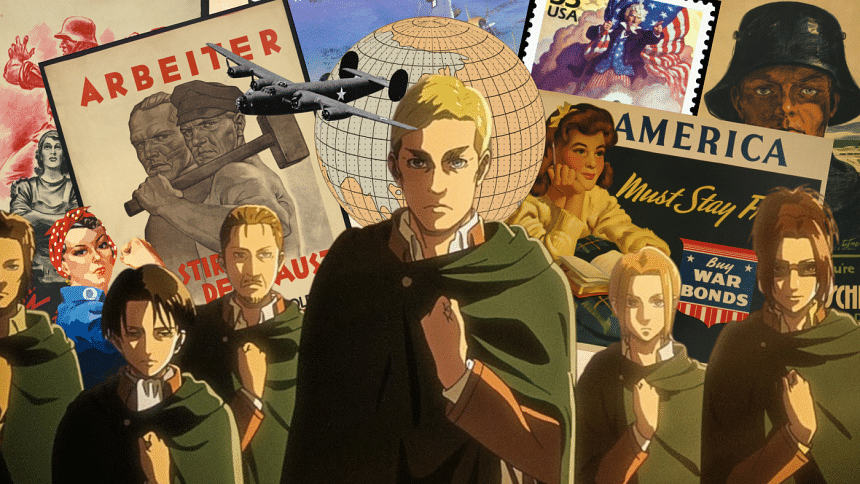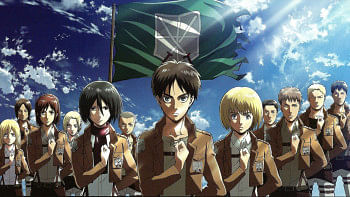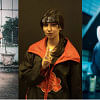Historical allusions in Attack on Titan: A fascist subtext

Warning: Contains spoilers
The use of real-world inspiration and imagery to create a fictional world is a common practice. George Lucas' Emperor in Star Wars was modelled after Richard Nixon, and in the anime Fullmetal Alchemist the fictitious Ishval Civil War utilised imagery from the Iraq War.
The zeitgeisty manga and anime Attack on Titan is no different, taking inspiration from Germanic imagery and illustrations of the Jewish Exodus, Axis powers of World War II, and the Holocaust.
Hajime Isayama's dystopian series Attack on Titan has become a beloved anime series packed with not only action but also bearing historical significance of war, fascism, anti-semitism, racism, and social stratification. With the manga having finished after an eleven-year publication run and the anime series nearing its end in 2023, the message of the story is gradually becoming clearer as it transcends from a battle between humans and man-eating humanoids to making political commentary through fiction and drawing from real-world conflicts.
The story begins in a civilisation where mankind lives within the confinement of three massive walls. Here, the parallels with Nazism are striking. Carl Schmitt, a well-known political thinker, defined an ideal fascist society as one that accepts injustice, conflict, and misery as unavoidable, seeking to redirect citizens' attention to a common adversary to prevent civil wars. This philosophy is illustrated within the society in Attack on Titan, where the totalitarian government has persuaded the people that their hardship is due to the humanoid titans oppressing them, and exploits this narrative to justify the militarisation of society.
Over the years, Attack on Titan has been accused of being anti-Semitic and harbouring unsettling fascist subtexts, due to narrative parallels with Nazism and the Holocaust, and because Isayama based one of his characters, Dot Pixis, on General Akiyama Yoshifuru of the Japanese Imperial Army.
However, the parallels do not necessarily indicate the acceptance of a fascist ideology. The main theme of Attack on Titan remains anti-fascist and anti-racist, which becomes more evident by diving further into the story.
Despite the parallels between Nazism and the story, it does not praise the fascist administration it depicts. Rather, it dissects and exposes its shortcomings.
Titans wandering outside the walls are discovered to have been humans once who were changed into titans forcefully and now mindlessly wander the world. Similar to how the Nazis utilised false propaganda to persuade people that Jews were the enemies of German society, the government in Attack on Titan did the same, with the "enemies" turning out to be humans and victims of the fascist system.
The story reveals that the nobles had manipulated news and history, lying to the public to divert attention away from their own lavish lifestyles, with the military serving as enforcers of this facade. Later, the nobility is revealed to be self-serving with no concern for humanity.
In Attack on Titan, Historia, the heir to the noble Reiss family, rejects her father's views that keeping the status quo is best for mankind and instead, releases Eren opting for the fall of their fascist regime.
Hajime Isayama imbues Attack on Titan with multiple allegories to create a tale that is both familiar and complicated, using historical tropes and images to make a statement about the toll racism and nationalism has on individuals. While some of it appears to reflect real-world politics, depiction does not imply endorsement. Overall, the parallels being drawn illustrate a specific side of our world.
Reference:
BetaSeries (2022). Fullmetal Alchemist: Scar and the Ishvalan Civil War Explained.

 For all latest news, follow The Daily Star's Google News channel.
For all latest news, follow The Daily Star's Google News channel. 









Comments